From October 5, 2019 to March 1, 2020, Palazzo Ducale in Genoa is hosting the exhibition Anni Venti in Italia, curated by Matteo Fochessati and Gianni Franzone: the exhibition aims to restore, with a wide selection of illustrative works, the atmospheres of one of the most complex decades in recent history, with a perspective that takes into account various aspects (artistic, cultural, social and other). What are the objectives of the exhibition? What is the reading of the decade offered by the exhibition? We talked about it with the curators. The interview is edited by Ilaria Baratta.
IB. In the presentation of the exhibition we read that your intent is to highlight the most “obscure, restless and irrational” aspects of Italian art in the 1920s. What are these aspects and how do you explore this goal of yours in the exhibition?
MF-GF. The exhibition is animated by the idea of presenting the 1920s with a different perspective than the one with which this decade has been approached in the latest exhibitions and critical studies devoted to the period. Usually, one is inclined to think of the 1920s as an era dominated by déco taste, glamorous atmospheres, and luxury. What actually emerges is a very complicated and tragic period, beginning with the Red Biennium. It is these “dark, restless and irrational” aspects that we wanted to investigate with our exhibition: the concerns and anxieties that characterized the period, beyond the hedonism and elegance usually associated with it. And it is from this assumption that we started, trying to see how the works of that period responded to the complexity of the decade.
After all, even from the point of view of art, the 1920s is a period of contrasts: in the exhibition, for example, we can see the works of the proponents of rappel à l’ordre alongside what we can understand somewhat as the aftermath of futurism (we will see, for example, works by Fortunato Depero). How did you bring together the different souls of art in the 1920s in the exhibition?
Precisely with this view of coexistence of different themes, also because the exhibition is a thematic exhibition. Therefore, we have identified a series of topics that we considered in some way explanatory of the art of that decade and then, within these themes, we have identified a series of trends that can coexist, indeed, that in some way give a sense of the richness of the artistic production of that period, animated by decidedly different aims: think, for example, of the dichotomy that sees on the one hand the artists of the return to order, those of the Novecento group, those of magic realism, and on the other hand the experiments of futurist matrix.
 |
| Gino Severini, Maternity (1916; oil on canvas; Cortona, Museo dellAccademia Etrusca e della Città di Cortona) |
 |
| Felice Casorati, Study for the portrait of Renato Gualino (1922-23; oil on panel; Turin, Private Collection). Photo Giuseppe Dell’Aquila, © SIAE |
 |
| Pippo Rizzo, The Nomad (1929; oil on panel; Palermo, Galleria d’Arte Moderna Empedocle Restivo) © Giacomo D’Aguanno/Civita Sicilia |
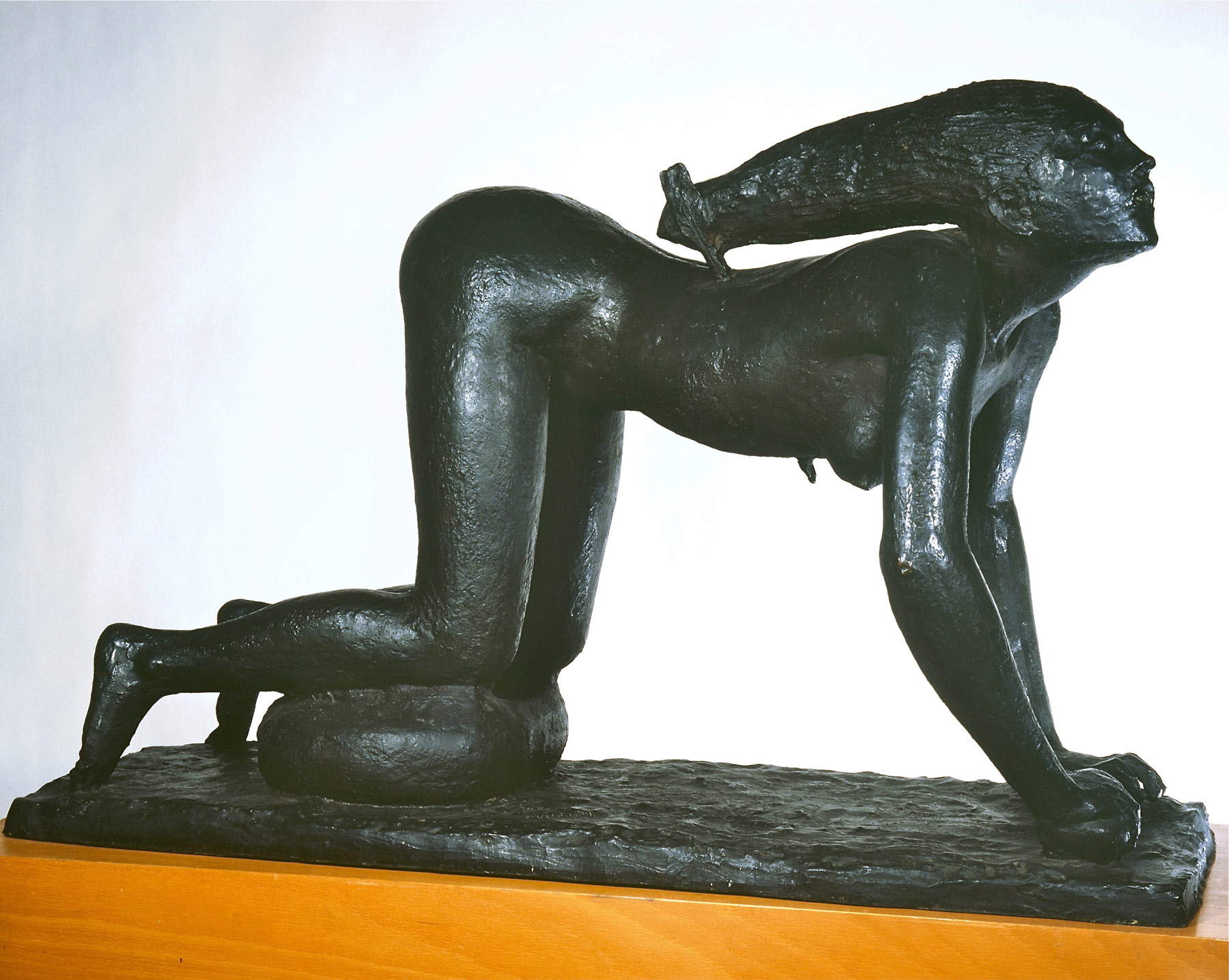 |
| Arturo Martini, The She-Wolf (1930-1931; bronze; private collection). Photo by Luca Bossaglia |
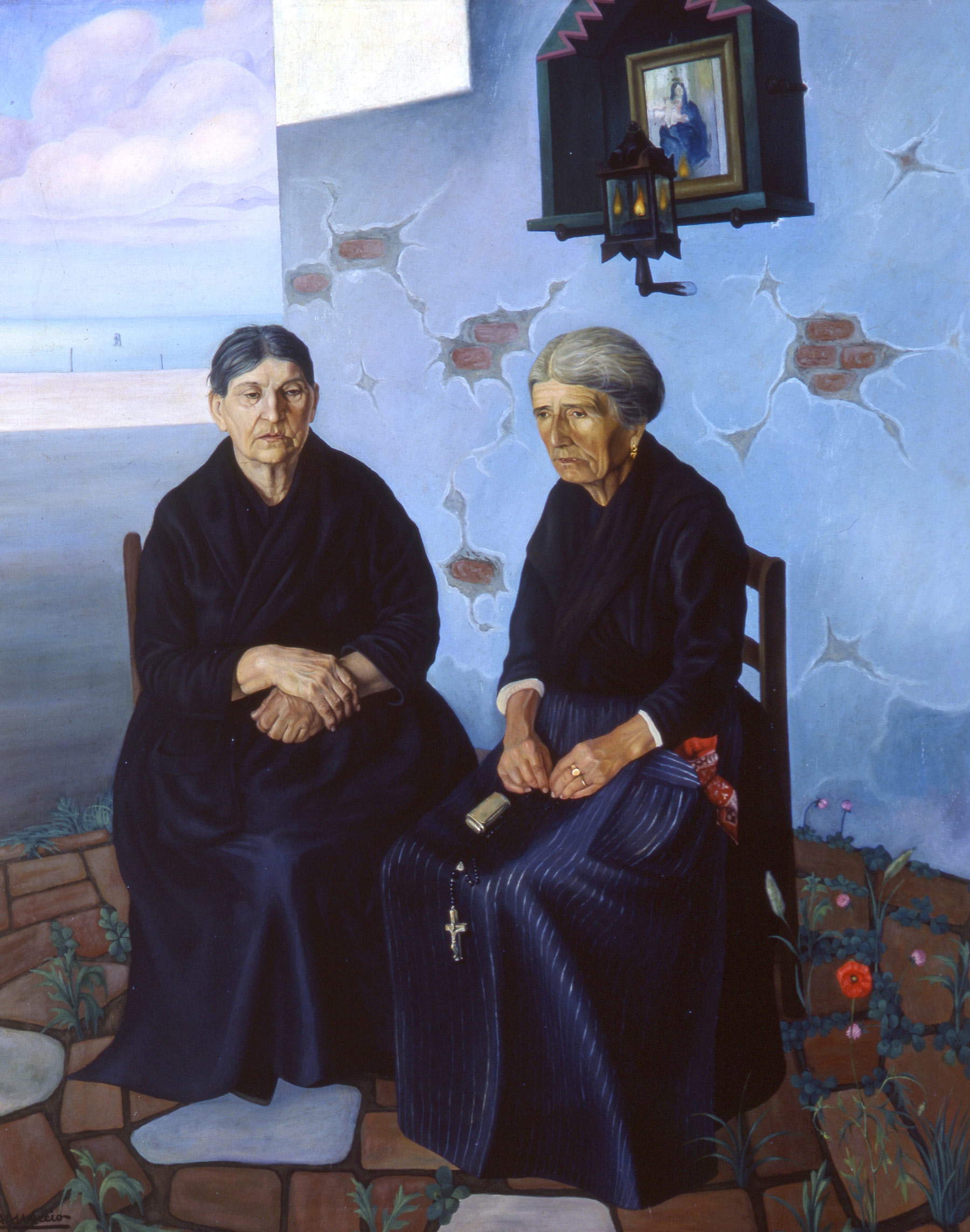 |
| Cagnaccio di San Pietro, a sera (The Rosary) (1923; oil on canvas; Genoa, Wolfsoniana-Palazzo Ducale Fondazione per la Cultura) |
How does the exhibition address the theme of the relationship between art and politics in the 1920s?
Politics and “History” (with a capital “S”) are the framework around which the exhibition develops. We did not want to select works explicitly about propaganda, not least because in any case the regime’s propaganda found its most explicit and most backward manifestations especially in the 1930s. Of course there are many references to politics, for example, there are two portraits of Mussolini, one by Thayaht and one by Wildt, which represent to some extent the expressive and linguistic dichotomy we were talking about earlier, that is, futurism on the one hand, and on the other hand the novecentism that was the predominant style in the 1920s. In this way we have shown how politics had a strong influence on the spirit of the time beyond the messages of propaganda, which therefore had a direct bearing even on works whose subjects appeared seemingly unrelated to the politics of the time.
In an era, the current one, of a resurgence of nationalism, and in which there is increasing talk of fascism, how did you come up with the problem of ordering an exhibition that necessarily had to do with fascism and pro-regime art?
We started from a reflection on the 1920s exactly a century later to come to identify (clearly understanding that there is a great distance between the 1920s and the present time) some sensations, some elements, some atmospheres that can unite these two decades, that is, the 1920s and the one we are living in, despite the fact that there is almost a century in between: in particular, we focused on the fact that a time of great tragedy, that is, the years of World War I, gives rise to a period of anguish, restlessness, and instability (including political instability) that ends with another time of enormous uncertainty, the economic crisis of 1929.
The 1929 crisis is also given space in the exhibition. How did this dramatic economic conjuncture affect culture and ways of making art at the time?
The exhibition has a chronological and historical framework, that is, it tells the story of the decade: the selection we have made is entirely composed of works that, although without didactic depictions, present direct references to the history of the period, significantly embodying the spirit of those years. This was the design scheme of our exhibition: not to exhibit works that implicitly made explicit references to the historical period or to the propaganda of the period, but to try to see how “everyday” art instead truly expressed the everydayness of the period, and thus also the sense of uncertainty, restlessness and expectation that was dominant at the time.
 |
| Adolfo Wildt, Mussolini’s Mask (1923-1925; marble high relief; Rome, Galleria Nazionale dArte Moderna e Contemporanea). By concession of the Ministry of Cultural Heritage and Activities. |
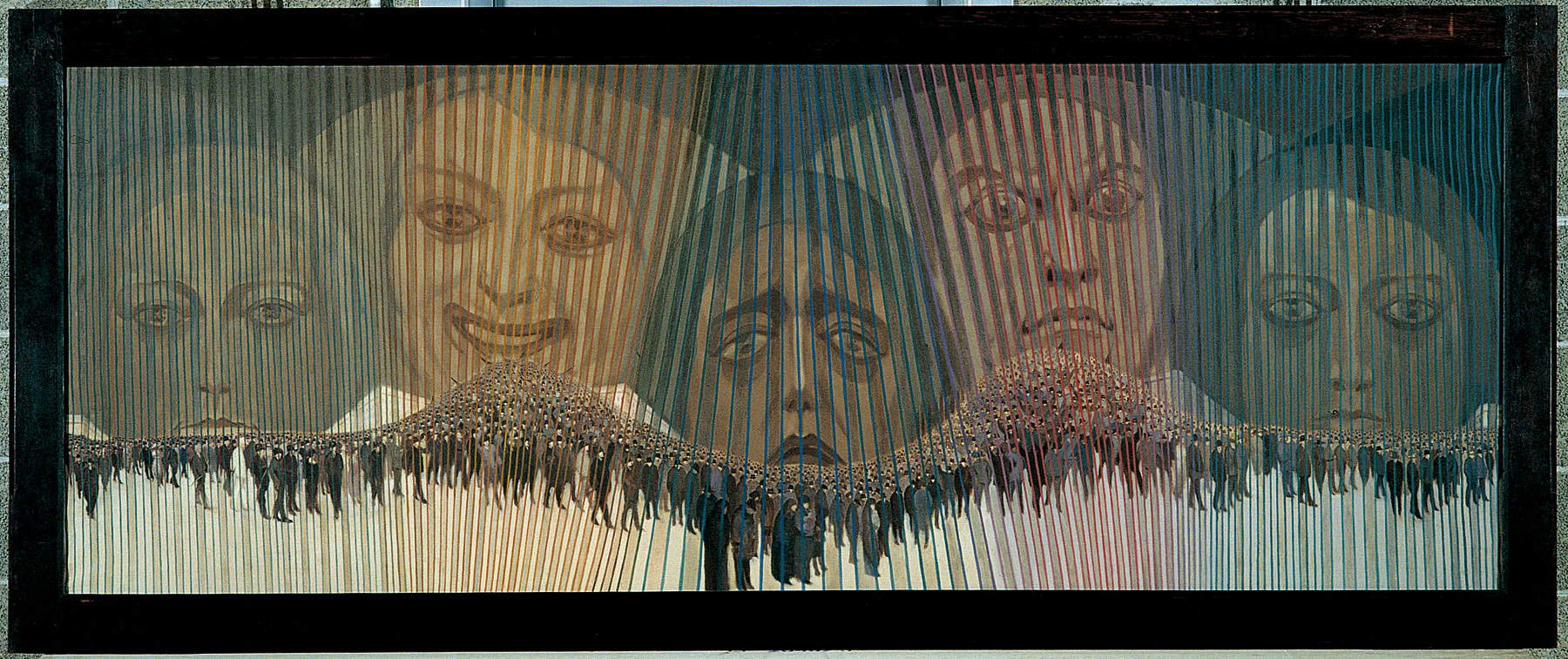 |
| Sexto Canegallo, The Crowd (1920; oil on canvas; Genoa, Wolfsoniana-Palazzo Ducale Fondazione per la Cultura) |
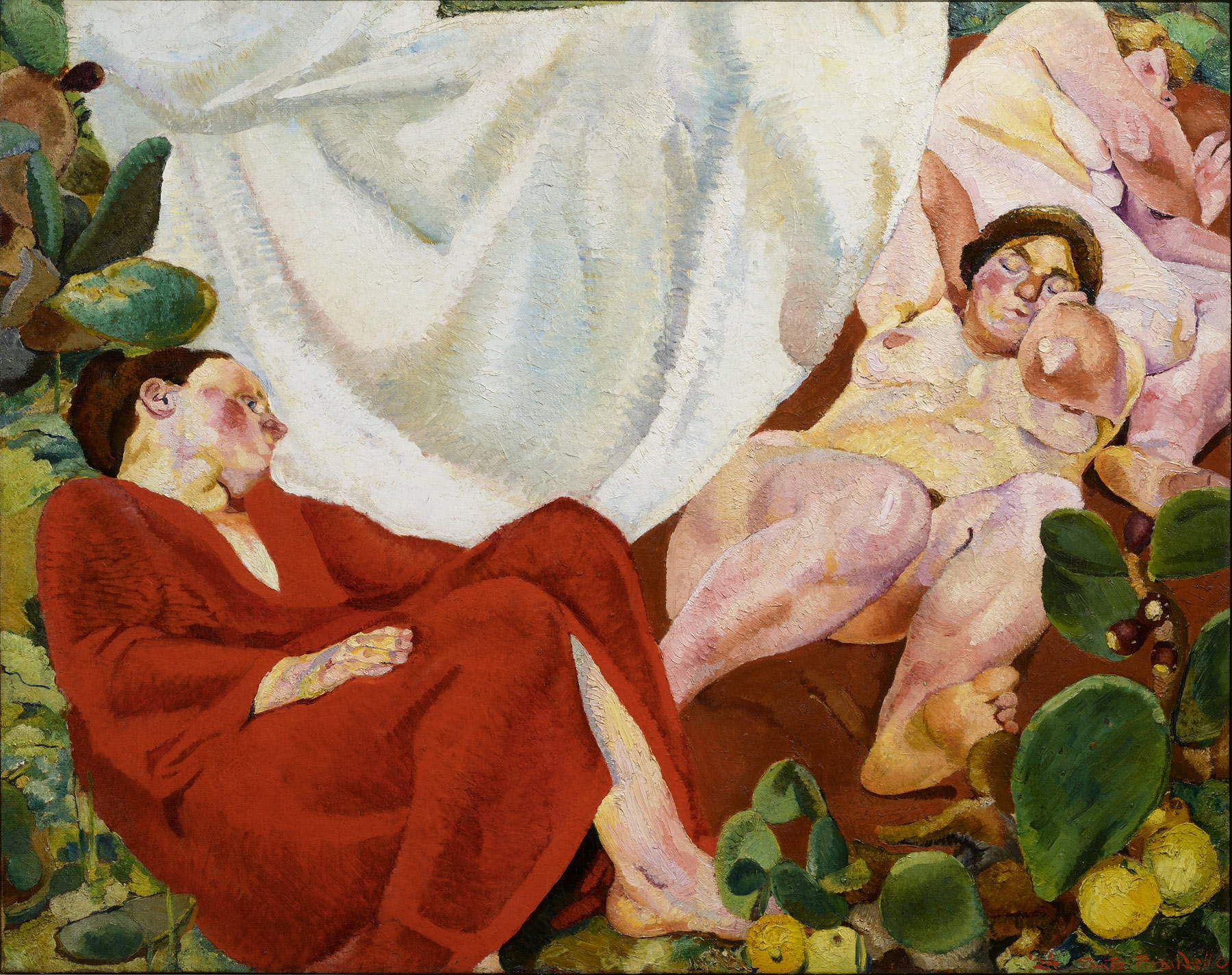 |
| Fausto Pirandello, Composition (Siesta rustica) (1924-1926; oil on canvas; Milan, Giuseppe Iannaccone Collection) |
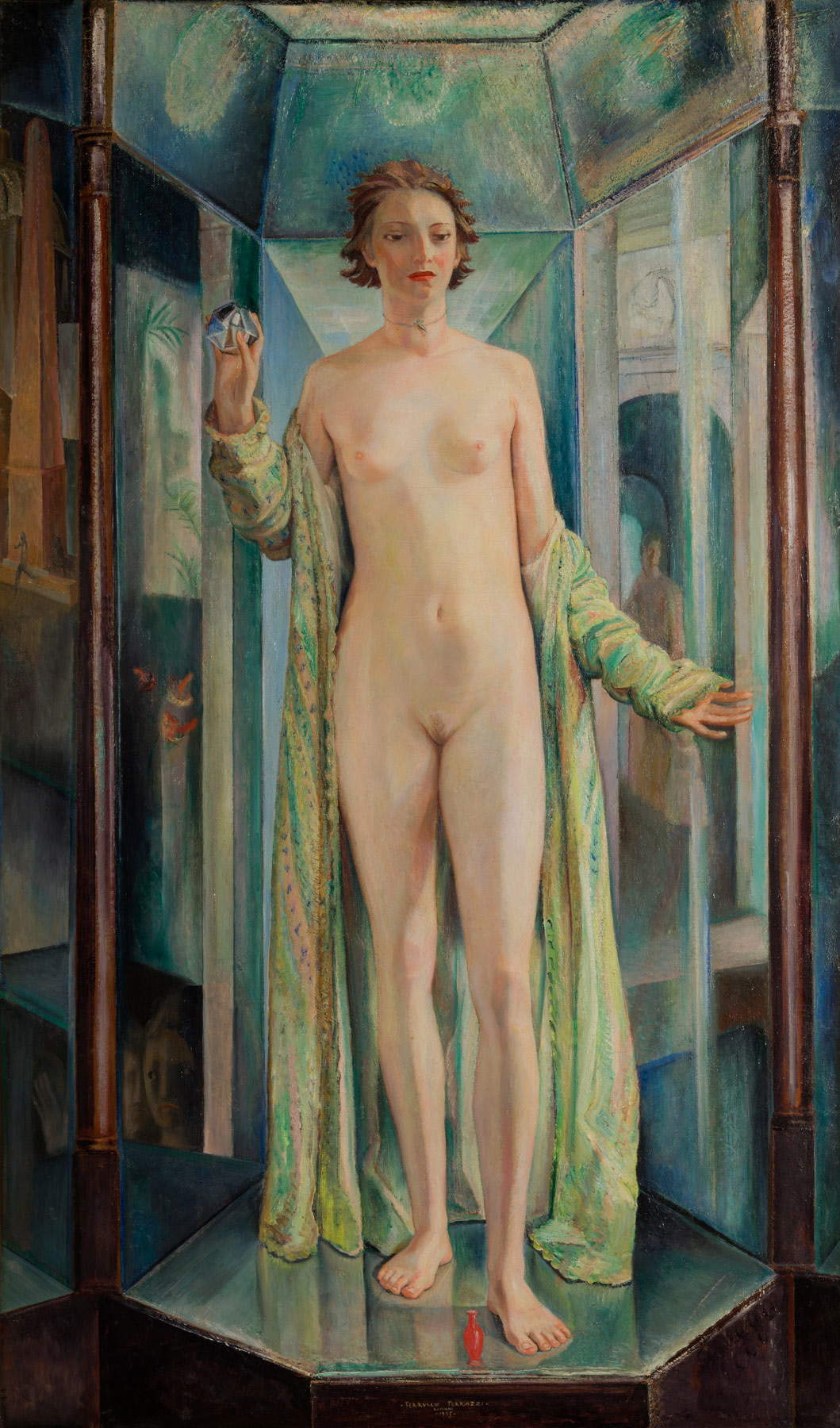 |
| Ferruccio Ferrazzi, The Idol of the Prism (1925; oil on panel; Genoa, Wolfsoniana - Palazzo Ducale Fondazione per la Cultura) |
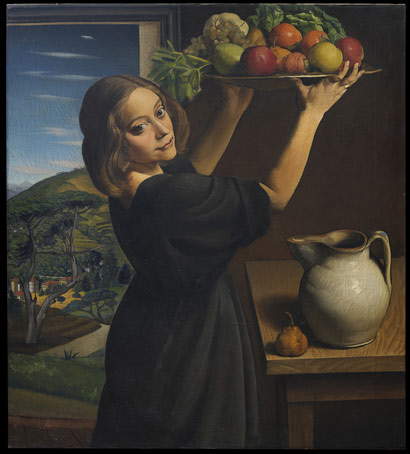 |
| Achille Funi, The Earth (1921; oil on canvas; Milan, Private Collection). Courtesy Archivio Achille Funi - Milan. Paolo Da Re Photography Studio, Bergamo |
What are the main innovations that emerge from the exhibition?
The exhibition proposes an analysis of a period that has been much studied and investigated in recent years. In our opinion, however, the novelty that emerges is precisely the different perspective with which one can look at the 1920s and thus find in this period a whole series of problematic issues that are reflected in the art of that time. A further unprecedented aspect of this exhibition is the methodological approach we have proposed, that is, we have tried to approach this historical period through our own key of interpretation as art historians while availing ourselves of a multilingual perspective of interpretation: it is no coincidence that the catalog that accompanies the exhibition consists, in addition to an essay by us on the art of the period, and another contribution by Fabio Benzi that offers an art historical framework of the decade, of essays by historians and an article by a literary historian such as Andrea Cortellessa, which contribute to enriching and increasing the perspectives of reading and interpretation of this decade. This, in our opinion, is the most novel cue, the most innovative aspect of the exhibition.
To conclude: what could be three reasons to suggest to the public to visit the exhibition?
The first is the quality and quantity of the works on display: the exhibition puts together a considerable number of works that have various provenances, from museums and private collections. The second is the exhibition’s interpretation key, an interpretation of the twentieth century that succeeds in returning its various facets. As for the third reason, we can say that Anni Venti in Italia is an exhibition that deals with events and artistic expressions of a hundred years ago but that helps us face and better understand our present: reasoning about the past, delving into what were the dynamics of a period as complex as the 1920s we believe can offer visitors a potential feedback on our present.
Warning: the translation into English of the original Italian article was created using automatic tools. We undertake to review all articles, but we do not guarantee the total absence of inaccuracies in the translation due to the program. You can find the original by clicking on the ITA button. If you find any mistake,please contact us.